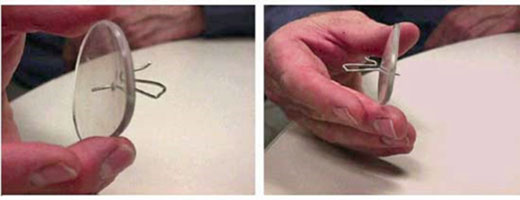Eye Protection
Every day an estimated 1,000 eye injuries occur in American workplaces. No matter where we work, flying particles, dusts, splashes, or flying objects are apt to expose us to potential eye injury. Fortunately, we can protect against these hazards by using the appropriate protective eyewear for our jobs.

Need for Protection
Preventing eye injuries from flying objects and splashes is – or should be – relatively easy. Eye protection is not “high tech” and it’s readily available. Yet thousands of workers suffer eye injuries each year because they don’t wear proper eye protection when conditions clearly call for it.
Here are the most common types of eye protection:
-
Safety glasses – These protect from flying objects and splashes approaching from the front. They also have side shields to protect from the side or eyecups to add protection from the top and bottom. Safety glasses can be prescription or non-prescription (plano) and are made with the lenses and frames tough enough to withstand a hard blow.
-
Goggles – These add protection from dust and sparks. They may be cushioned for a better fit and they are usually ventilated, directly or indirectly, to allow air to circulate.
Face shields and helmets – These are designed to protect the entire face, or entire head, and are often tinted to protect against intense light. However, workers using helmets or face shields should also wear safety glasses underneath to provide protection when the outer equipment is removed.
What Not to Use
There are several important notes of caution about eye protection.
• Don’t substitute regular glasses for safety glasses. They may look the same, but regular glasses are not hard enough to resist a hard blow, even with shatterproof lenses; such a blow could result in part of the lens or frame being pushed into the eye.
-
Don’t wear metal-framed eye protection in areas where there may be an electrical hazard. Metal, of course, conducts electricity, so accidental contact between the frame and an energized power source could mean a real tragedy.
-
Don’t wear contact lenses in conditions that expose you to heavy dust, vapors, or splashes.
Don’t take chances…Open your eyes and protect your vision!!!
Download flyer: STOTW_44_EyeProtection.pdf (107.15 kb)

